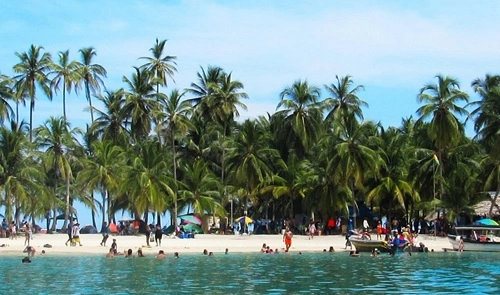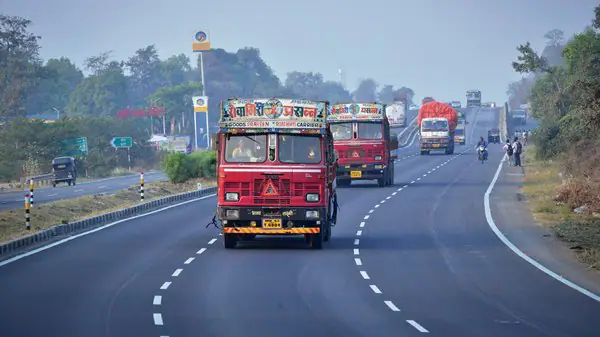Panama, a small but incredibly diverse country in Central America, holds a unique place on the world map as a bridge between North and South America and a gateway between the Atlantic and Pacific Oceans. Known for the famous Panama Canal, this vibrant nation offers more than just an engineering marvel. From incredible biodiversity and indigenous heritage to unique weather patterns and a dollar-based economy, Panama is a country full of surprises. Here are over ten interesting facts about Panama that reveal why this fascinating country has so much to offer.

1. Home of the Panama Canal: An Engineering Marvel
The Panama Canal, one of the most important waterways in the world, is a 50-mile canal that allows ships to travel between the Atlantic and Pacific Oceans, saving nearly 8,000 miles of travel. Opened in 1914, the canal is a modern engineering marvel and a major hub for international trade. Over 12,000 ships pass through the canal each year, carrying everything from consumer goods to natural resources. The canal is a major contributor to Panama’s economy, generating billions in revenue annually.
2. A Country with Two Coastlines
Panama is one of the few countries in the world with coastlines on both the Atlantic (Caribbean) and Pacific Oceans. Thanks to its unique location, Panama offers an incredible diversity of beach experiences—from the calm, turquoise waters and coral reefs of the Caribbean side to the wilder, surf-friendly shores on the Pacific. The country’s narrow geography allows visitors to experience a sunrise on the Caribbean coast and a Pacific sunset in the same day.
3. Biodiversity Hotspot: Panama’s Rich Wildlife
Panama is recognized as a biodiversity hotspot, boasting rainforests, mangroves, and mountainous regions that provide habitats for over 10,000 species of plants, 1,000 bird species, and a wealth of unique wildlife. The country has nearly 30% of its land protected as national parks and reserves, including the iconic Soberanía National Park, home to monkeys, sloths, and hundreds of bird species. Panama’s rich biodiversity attracts nature lovers, biologists, and eco-tourists from around the globe.
4. The Only Place Where You Can See the Sun Rise on the Pacific and Set on the Atlantic
Because of Panama’s unique S-shaped geography, it is the only country in the world where you can see the sun rise over the Pacific Ocean and set over the Atlantic Ocean. This phenomenon is particularly visible from certain points in the country, like the town of Boquete in the highlands. Panama’s unique geographic position between two oceans makes it an ideal location for this rare experience.
5. Panama’s Official Currency Is the U.S. Dollar
One of the unique aspects of Panama’s economy is that its official currency, alongside the Panamanian Balboa, is the U.S. dollar. The Balboa is used mainly in coin form and is equivalent to the dollar in value, but for all practical purposes, Panama functions on the dollar economy. This unique system simplifies trade and tourism, making Panama an attractive destination for American travelers who don’t need to worry about currency exchange rates.
6. The Country Has No Military
Panama is one of the few countries in the world without a standing military force. Following the U.S. invasion in 1989 that removed dictator Manuel Noriega, Panama abolished its military and now relies on a national police force for internal security. This decision is written into the country’s constitution, and Panama maintains friendly relations with neighboring countries. The lack of a military is a point of pride for many Panamanians and contributes to Panama’s reputation as a peaceful nation.
7. The Guna Yala Islands: A Unique Indigenous Culture
The Guna Yala region, also known as the San Blas Islands, is home to the Guna people, one of Panama’s largest indigenous groups. The Guna people have maintained their cultural independence, operating their own political and economic systems. The islands are famous for their stunning turquoise waters, white sand beaches, and the traditional “molas,” colorful hand-stitched fabrics that are an essential part of Guna culture. Visiting Guna Yala offers travelers a glimpse into a unique way of life that respects tradition and nature.
8. Panama City: The Only Capital with a Rainforest Within City Limits
Panama City is the only capital city in the world that has a rainforest within its city limits. The Metropolitan Natural Park, located in the heart of Panama City, is a lush tropical rainforest where visitors can hike, observe wildlife, and enjoy views of the city skyline. The park’s trails offer opportunities to spot sloths, toucans, and other wildlife just minutes away from the bustling urban center, making Panama City a unique blend of urban life and natural beauty.
9. Panama’s Canal Revenue Funds Education and Healthcare
The Panama Canal is not only a key player in global trade but also a major source of revenue for the Panamanian government. A significant portion of the canal’s profits is allocated to fund education, healthcare, and social programs in the country. Thanks to the canal, Panama has one of the fastest-growing economies in Latin America, and the funds generated support national development initiatives, making a meaningful difference in the lives of its citizens.
10. A Haven for Coffee Lovers
Panama’s highlands, particularly the Boquete region, produce some of the world’s most sought-after coffee. Panama’s Geisha coffee, a rare and flavorful variety, is considered one of the best coffees globally and often commands record-breaking prices at auction. The unique climate and volcanic soil of the Panamanian highlands create ideal conditions for coffee growing, making Panama a favorite destination for coffee enthusiasts who want to sample some of the world’s finest beans.
11. A Popular Destination for Retirees
Panama has become a top destination for American retirees, drawn by the country’s warm climate, affordable healthcare, and relatively low cost of living. The Panamanian government offers a “Pensionado Program” that provides retirees with discounts on everything from medical services to entertainment. Many expats have settled in areas like Boquete and Panama City, enjoying the blend of modern amenities and laid-back lifestyle. With the use of the U.S. dollar and familiar infrastructure, Panama makes retirement living easy and affordable for Americans.
12. Panama’s Diverse Weather Patterns
While Panama doesn’t have the traditional four seasons, it does experience a dry season and a rainy season. The dry season, from December to April, is considered the best time to visit, while the rainy season from May to November sees heavy rainfall, especially in the highlands and rainforest areas. However, because Panama sits outside the hurricane belt, it rarely experiences hurricanes, making it a relatively safe tropical destination year-round.
13. A Strong Tradition of Festivals and Celebrations
Panama is known for its vibrant festivals, blending indigenous, African, and Spanish influences. Carnival, celebrated each February, is one of the largest events in the country, featuring parades, music, elaborate costumes, and water “wars” where revelers spray each other to stay cool. Another famous celebration is the Festival de Diablos y Congos, where locals dress as devils and perform traditional dances. These lively festivals showcase Panama’s rich cultural heritage and are a highlight for visitors.
14. Bridge of the Americas: Connecting Continents
The Bridge of the Americas, completed in 1962, spans the Panama Canal, linking North and South America. This iconic structure is not only an engineering feat but also a symbol of Panama’s role as a connector between two continents. The bridge remains a vital transportation route and offers visitors stunning views of the canal and Panama City. The Centennial Bridge, added in 2004, also crosses the canal, alleviating congestion on the Bridge of the Americas.
Conclusion
From its globally significant canal and rich biodiversity to its peaceful way of life and fascinating indigenous cultures, Panama is a country full of interesting contrasts and rich history. Each of these facts highlights Panama’s unique role as both a geographical and cultural bridge between continents, oceans, and traditions. Whether you’re visiting for the beaches, exploring the highlands, or immersing yourself in vibrant festivals, Panama offers a little something for everyone. These interesting facts reveal that there’s more to the “Crossroads of the Americas” than meets the eye—Panama is a destination brimming with diversity, beauty, and surprises waiting to be discovered.


